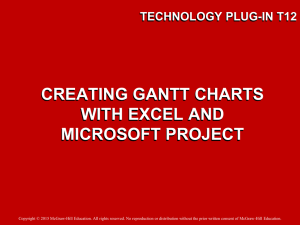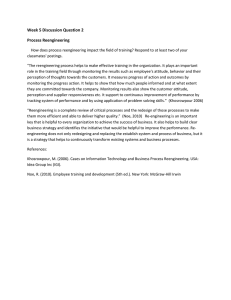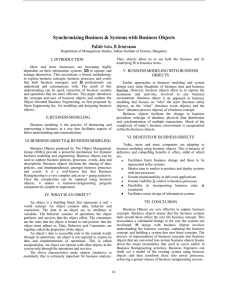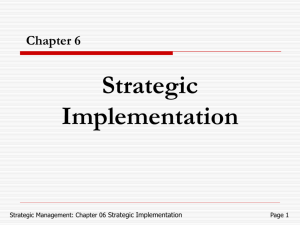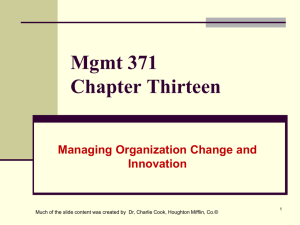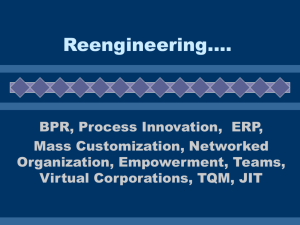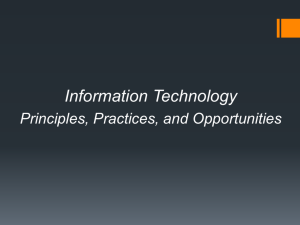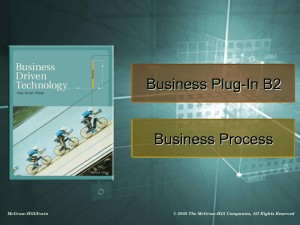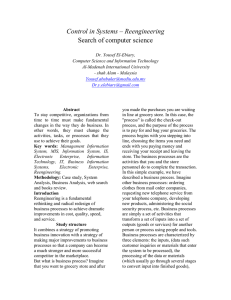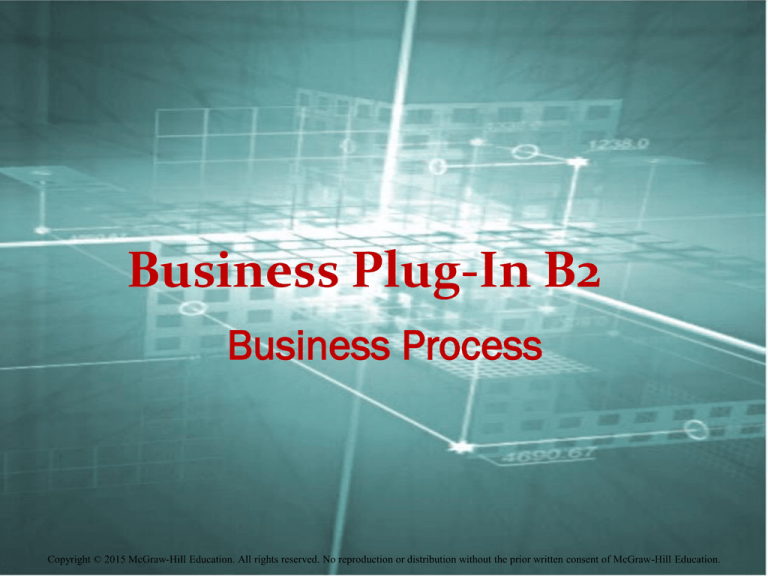
Business Plug-In B2
Business Process
Copyright © 2015 McGraw-Hill Education. All rights reserved. No reproduction or distribution without the prior written consent of McGraw-Hill Education.
LEARNING OUTCOMES
1. Describe business processes and their
importance to an organization
2. Compare the continuous process
improvement model and business process
reengineering
2-2
LEARNING OUTCOMES
3. Describe the importance of business process
modeling (or mapping) and business process
models
4. Explain business process management along
with the reason for its importance to an
organization
2-3
INTRODUCTION
O Business process improvement will, at a
minimum, double the gains of a project
by streamlining outdated practices,
enhancing efficiency, promoting
compliance and standardization, and
making an organization more agile
2-4
INTRODUCTION
O Business process improvement involves
three key steps
1. Measure what matters to most customers
2. Monitor the performance of key business
processes
3. Assign accountability for process
improvement
2-5
Examining Business
Processes
O Business process characteristics:
O The processes have internal and external users
O A process is cross-departmental
O The processes occur across organizations
O The processes are based on how work is done in the
organization
O Every process should be documented and fully
understood by everyone participating in the process
O Processes should be modeled to promote complete
understanding
2-6
Business Process
Improvement
O Companies are forced to
improve their business
processes because
customers are demanding
better products and
services
2-7
Business Process
Improvement
O Continuous process improvement model -
attempts to understand and measure the
current process, and make performance
improvements accordingly
2-8
BUSINESS PROCESS
REENGINEERING
O Business process reengineering (BPR) - analysis
and redesign of workflow within and between
enterprises
2-9
BUSINESS PROCESS
REENGINEERING
O Managerial approach to reengineering
projects
1. Define the scope
2. Analyze
3. Evaluate
4. Plan
5. Approve
6. Execute
2-10
Business Process Design
O Business process modeling (or mapping) - the
activity of creating a detailed flow chart or process
map of a work process showing its inputs, tasks,
and activities, in a structured sequence
O Business process model - a graphic description of a
process, showing the sequence of process tasks,
which is developed for a specific
O As-Is process model
O To-Be process model
2-11
Business Process Design
2-12
Business Process Design
2-13
Business Process Design
2-14
Business Process Design
2-15
SELECTING A PROCESS
TO REENGINEER
O Criteria to determine the importance of the process:
O Is the process broken?
O Is it feasible that reengineering of this process will succeed?
O Does it have a high impact on the agency’s strategic direction?
O Does it significantly impact customer satisfaction?
O Is it antiquated?
O Does it fall far below best-in-class?
O Is it crucial for productivity improvement?
O Will savings from automation be clearly visible?
O Is the return on investment from implementation high and
preferably immediate?
2-16
Business Process
Management
O Business process management (BPM) - integrates all
of an organization’s business process to make
individual processes more efficient
2-17
Business Process
Management
O BPM allows business process to be executed more
efficiently and measures performance and identifies
opportunities for improvement, BPM benefits include:
O
O
O
O
O
O
O
O
O
Update processes in real-time
Reduce overhead expenses
Automate key decisions
Reduce process maintenance cost
Reduce operating cost
Improve productivity
Improve process cycle time
Improve forecasting
Improve customer service
2-18
BPM TOOLS
O Business process management tool - an application
that designs business process models and simulates,
optimizes, monitors, and maintains various
processes
2-19
CRITICAL SUCCESS
FACTORS
1. Understand reengineering
2. Build a business and political case
3. Adopt a process management approach
4. Measure and track performance
continuously
5. Practice change management and
provide central support
6. Manage reengineering projects for results
2-20
Business Process
Modeling Examples
2-21
Business Process
Modeling Examples
2-22
Business Process
Modeling Examples
2-23
Business Process
Modeling Examples
2-24
Business Process
Modeling Examples
2-25
Business Process
Modeling Examples
2-26
Business Process
Modeling Examples
2-27

